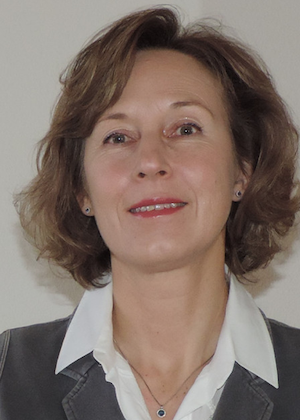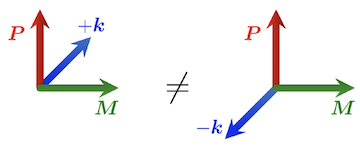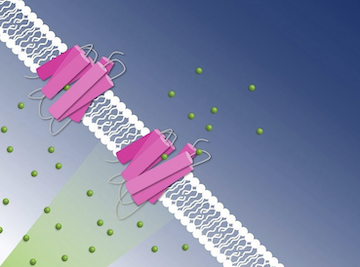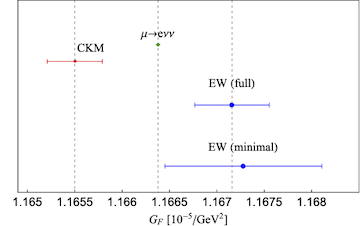|
|
Dear Colleagues
I would like to begin by quoting the stoic philosopher Seneca: “Whatever can happen at any time can happen today.” May good times lie ahead of us, and all our efforts and endeavors be successful.
On 28 February, the SLS 2.0 User Information Workshop took place. Opening the way to a bright future, the SLS 2.0 upgrade, however, will imply a dark time period for the SLS user community. As of now, it is planned to open the last call before the dark time in August 2022 for the beamtime period January-October 2023.
|

Joanna Hoszowska
|
|
The European Synchrotron and FEL User Organisation (ESUO), in cooperation with LEAPS (League of European Accelerator-based Photon Sources), has launched a questionnaire "Possible impacts of the absence of TransNational Access (TNA) funding for the user community".
The outcome of this questionnaire will empower ESUO to continue advocating both to the European Commission and to the national funding agencies for TNA funding for all science topics and for all scientists. We strongly recommend to complete the questionnaire as soon as possible.
COVID-19 restrictions to enter Switzerland have been lifted. However, the safety measures for user operation at PSI are still in place. Please have a look at the updated information.
The next JUSAP board meeting is scheduled for May. We encourage all members of the PSI user community to contact us regarding any issues that concern user operation at PSI.
Yours sincerely,
Joanna Hoszowska
on behalf of the JUSAP panel
|
|
Next proposal submission deadlines:
SLS: PX beamlines
deadline: 15 April 2022
more information
SINQ
deadline: 15 May 2022
more information
SµS
deadline: 6 June 2022
more information
SwissFEL
deadline: 15 September 2022
more information
SLS: non-PX beamlines
deadline: 15 September 2022
more information
CHRISP
deadline: January 2023 (tbd)
more information
An overview of all proposal submission deadlines of the PSI facilities can be found here.
|
|
|
Exploring the electronic structure of InAs and InSb surfaces
 SLS — Towards compact quantum computers SLS — Towards compact quantum computers
With a view to putting quantum materials to work in quantum devices, the electronic structure of their surfaces is of central importance. However, engineering and simulating surfaces is highly challenging. Hence the interest in comprehensive theory–experiment works, such as a recent study combining density functional theory (DFT) and soft X-ray angle-resolved photoemission spectroscopy (ARPES) performed at SLS. A scheme to project the calculated band structure of a surface slab supercell onto the bulk primitive cell facilitated direct comparison of simulated and experimental results. With this approach, the collaborating teams studied the electronic structure of InAs(001), InAs(111), and InSb(110) surfaces. The detailed insight they obtained is particularly important for applications of these materials in hybrid semiconductor–superconductor devices, not least for topological qubits utilizing the Majorana zero modes.
Read the full story |
|
|
S. Yang et al., Advanced Quantum Technologies 5, 210003 (2022)
|
|
|
Confirming the trilinear form of the optical magnetoelectric effect in Co2Mo3O8
 SINQ — Flips in all directions SINQ — Flips in all directions
One of the most intriguing optical phenomena in magnetoelectric media is directional dichroism, where the magnitude of light absorption is different for beams with opposite propagation vectors k. This optical magnetoelectric effect occurs in materials with non-parallel magnetization ( M) and electric polarization ( P), and it has been predicted that the refractive index n contains a trilinear term proportional to k ⋅ ( P × M). In an experimental study combining THz spectroscopy and inelastic neutron scattering — the latter performed at SINQ — an international team of researchers has now confirmed this trilinear form for the polar honeycomb antiferromagnet Co 2Mo 3O 8, notably without invoking either symmetry-based or material-specific assumptions. Instead they independently reversed M, P and k, thus experimentally realizing all three possibilities for obtaining directional dichroism.
Read the full story |
|
|
S. Reschke et al., npj Quantum Materials 7, 1 (2022)
|
|
|
Time-reversal symmetry-breaking charge order in a kagome superconductor
 SμS — New insight into unconventional superconductivity SμS — New insight into unconventional superconductivity
Materials in which the atoms are arranged in the kagome pattern of corner-sharing triangles are known to be a versatile testbed for probing quantum phases, including in rare cases unconventional superconductivity. Now an international team led by PSI scientists established through muon-spin relaxation experiments performed at SμS that in one such kagome superconductor, KV 3Sb 5, the time-reversal symmetry-breaking fields appear below the charge-ordering temperature. These results imply an exotic type of charge order where the electrons flow spontaneously in loops within the kagome lattice. Such dynamics have been theoretically proposed before, but direct experimental evidence has been missing until now. Having a strong case pointing to the rare intertwining of time-reversal symmetry-breaking charge order with correlated superconductivity promises to provide unique new insight into other quantum materials — including high-temperature superconductors — and, more broadly, enables direct comparisons with fundamental models of quantum many-body physics.
Read the full story |
|
|
C.Mielke III et al., Nature 602, 245 (2022)
|
|
|
Dynamics and mechanism of a light-driven chloride pump
 SwissFEL — How to get chloride ions into the cell SwissFEL — How to get chloride ions into the cell
Utilizing the unique synergy at PSI of the SwissFEL free-electron laser and the SLS synchrotron light source, researchers captured for the first time a molecular movie that shows in detail the process of an anion transported across the cell membrane by a light-fueled protein pump. They combined time-resolved serial crystallography with time-resolved spectroscopy and multiscale simulations to study the working principles of a chloride-pumping rhodopsin protein. Dynamics in the millisecond-range were investigated at SLS, whereas faster processes, down to the picosecond time scale, were captured at SwissFEL. Based on the combined insights obtained in these experiments, the researchers propose a ion-transfer pathway in bacterial halorhodopsin — bringing us a step closer to unravel the mystery of how light energy initiates the pumping process, and how nature made sure there is no anion leakage back outside.
Read the full story |
|
|
S. Mous et al., Science 375, 845 (2022)
|
|
|
Fermi constant from muon decay versus electroweak fits and CKM unitarity
 CHRISP — Muon and pion decays as tests for new physics CHRISP — Muon and pion decays as tests for new physics
The search for physics beyond the Standard Model of particle physics (BSM) involves a delicate interplay between highly precise low-energy inputs and results from the energy frontier. A prime example is the Fermi constant GF, which parametrizes the strength of the weak interactions. The by far most precise determination of GF is obtained by muon-lifetime measurements, which alone, however, cannot exclude BSM effects to the muon decay. To do so, the consistency with an alternative GF determination needs to be established. This can be achieved by a global fit of electroweak (EW) precision data or be obtained from superallowed β decays using CKM unitarity. Some tension has been found between these results, and new theory work now investigated possible BSM scenarios that could explain this. The CKM value of GF would benefit from an alternative determination from pion decays — which is one of the goals of the future PIONEER experiment at PSI (see CHRISP Facility News below).
|
|
|
A. Crivellin et al., Physical Review Letters 127, 071801 (2021)
|
|
|
News from the user facilities
|
|
|
Direct observation of crack-formation mechanisms
SLS
Laser powder bed fusion is a versatile additive-manufacturing process for printing geometrically complex metal parts for a variety of applications. However, poor control of defect formation during processing hampers its widespread industrial adoption. A study at the TOMCAT beamline of SLS now establishes that fast operando X-ray radiography can reveal the mechanisms for cracking during 3D laser printing of a Ni-based superalloy. This new technique can be used for process optimisation, validation of thermo-mechanical simulations, as well as for the development of new materials for laser-based additive manufacturing.
More information |
|
Celebrating 25 years of SINQ
SINQ
On 17 January 2022, we celebrated the 25th anniversary of the inauguration of the Swiss Spallation Neutron Source SINQ. Meinrad Eberle, PSI director from 1992 to 2002, expressed his satisfaction about the successful completion of the SINQ project — achieved thanks to the exemplary efforts of PSI experts in a truly interdisciplinary collaboration. The former Federal Councillor Ruth Dreifuss emphasized the importance of SINQ in strengthening both the Swiss and the European research areas in broad fields of science. The quarter of a century since SINQ has produced its first neutrons, on 3 December 1996, were also a time of constant development, innovation and collaboration — leaving us with plenty to look forward to for the decades to come.
More information |
|
New film preparation chamber
SμS
We have designed and constructed a thin-film preparation chamber with base pressure of < 2·10 -9 mbar. The chamber is equipped with two large-area evaporators, an ion sputtering gun, a thickness monitor, and a substrate heater. Initial commissioning of the chamber resulted in high-quality, large-area and uniform molecular films of CuPc and TbPc 2 on various substrate materials that have been subsequently investigated at LEM. The chamber is designed such that it is possible to transfer thin-film samples in vacuum directly to the LEM spectrometer or to other advanced characterization facilities in the new Quantum Matter and Materials Center at PSI ( QMMC), which will be constructed in 2024. |
|
EU XFEL Young Scientist Award for Camila Bacellar
SwissFEL
Camila Bacellar, a beamline scientist and group leader at the Alvra endstation of SwissFEL, received the European XFEL Young Scientist Award, which recognises the contribution of young scientists to research at the European XFEL in Hamburg. The research of Camila Bacellar focuses on the use of ultrafast X-ray spectroscopy to probe excited-state dynamics in chemical and biological systems. In particular, she is bestowed the honour as a result of her research into the structural and electronic dynamics of heme proteins, such as cytochrome C and myoglobin — collaborative work that took place between EPFL, SwissFEL and European XFEL.
More information |
|
Open CHRISP Users Meeting BV53
CHRISP
The 53rd edition of the user meeting for the CHRISP facility took place from 24 to 28 January 2022. Due to the pandemic situation, all sessions were held again remotely in the afternoons and evenings, to ensure best accessibility for the committee and the largest part of the user base. The first two days were restricted to closed in-depth status reviews of the Mu3e, n2EDM, MEG II and MUSE experiments. More than 100 participants followed the open session with presentations of new proposals and selected progress reports. The research committee recommended approval of the LEMING and the PIONEER experiments. LEMING aims to produce a cold beam of muonium atoms for studies of gravity and precision spectroscopy. PIONEER is designed to enable order-of-magnitude improvements in the measurements of the branching fraction of pions to electrons versus muons, and in a further step also of the pion beta decay.
More information |
|
|
|